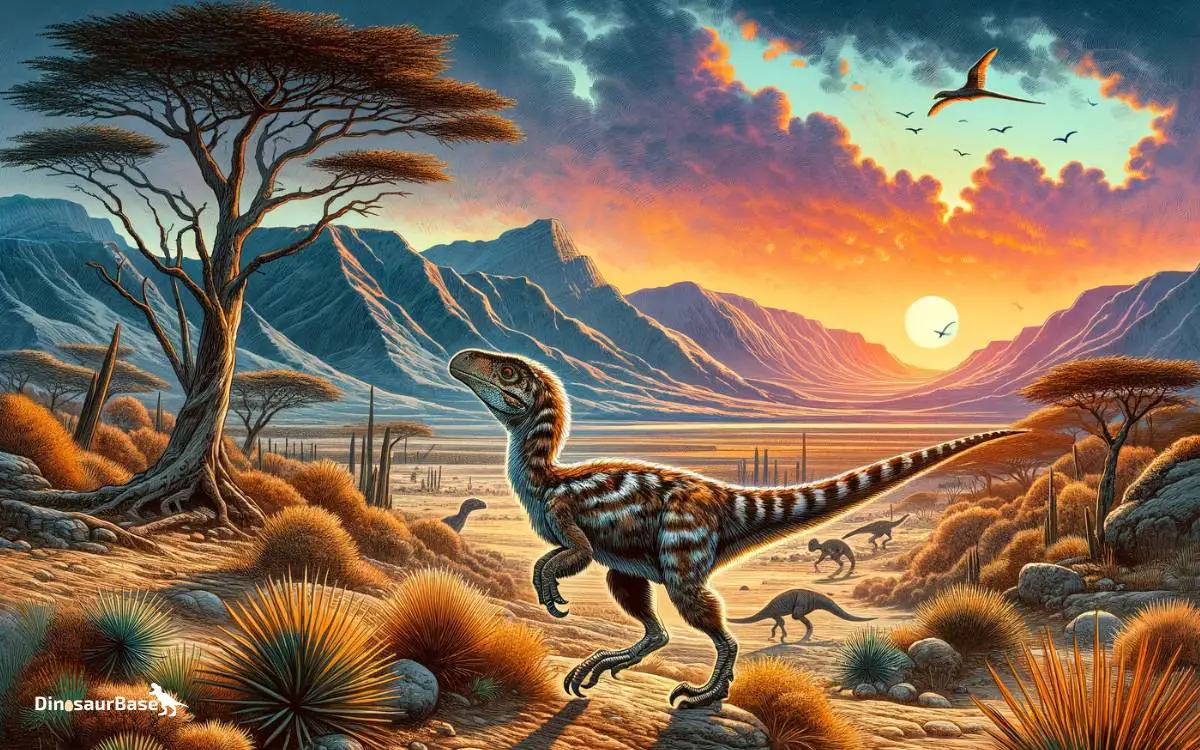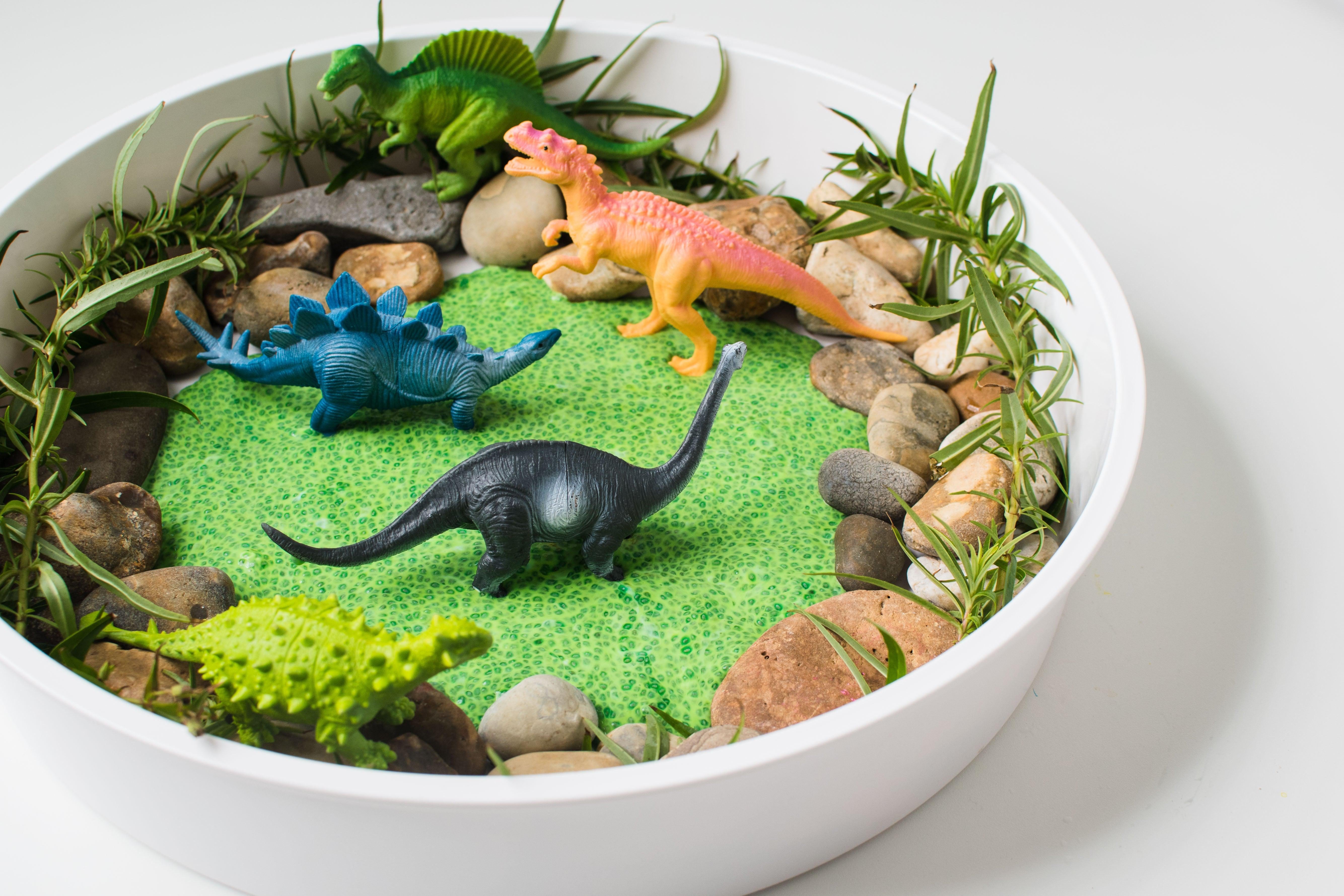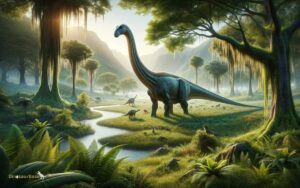Discover the First Dinosaur: A Beginner’S Guide
The first dinosaur fossils were discovered in the early 19th century. William Buckland formally described Megalosaurus in 1824.
Diving into the realm of paleontology, the discovery of the first dinosaur marks a monumental chapter in scientific history.
These prehistoric giants roamed Earth millions of years ago, sparking curiosity and fascination across generations.
Guiding beginners through this journey, it’s essential to understand the significance of early findings and their impact on our knowledge of Earth’s biological past.
Scientists continue to unravel the vast and intricate history of dinosaurs through dedicated research and groundbreaking discoveries.
This enlightening guide invites you to step back in time to when dinosaurs ruled the land, offering a foundation to appreciate these remarkable creatures that once dominated the planet.

The Dawn Of Dinosaurs
Welcome to the remarkable world of prehistoric life, a time when the first giants to walk the Earth made their debut.
This chapter of history beckons us to explore the Triassic period, the era that gave rise to the colossal creatures known as dinosaurs.
Journey with us as we delve into the origins and characteristics of these ancient behemoths in “The Dawn of Dinosaurs”.
Triassic Origins
The story of dinosaurs begins over 230 million years ago. Earth’s continents were still connected, forming the supercontinent Pangaea.
This era, the Triassic period, witnessed the rise of many reptile species, but none as captivating as the very first dinosaurs.
- Climate: Varied from arid deserts to humid jungles.
- Ecosystems: Diverse, laying the groundwork for dinosaur evolution.
- First Dinosaurs: Small, bipedal, and agile.
Dinosaurs started small but evolved into a variety of forms, exploiting ecological niches and dominating the landscape.
Early Species Characteristics
The pioneers among dinosaurs were different from the colossal titans we often imagine. Small size and two-legged movement were common traits, shared by early species.
| Characteristic | Description |
|---|---|
| Size | Small, similar to modern turkeys. |
| Diet | Primarily carnivorous, hunting insects and small prey. |
| Posture | Upright, walking on two legs. |
| Teeth and Claws | Sharp, designed for gripping and tearing. |
These characteristics provided the blueprint for what was to come; a diverse array of creatures that would rule the Earth for millions of years. As time progressed, dinosaurs developed new features to adapt to their changing world. This evolution paved the way for the majestic and diverse dinosaurs of the Jurassic and Cretaceous periods.
The Search Begins
Curiosity sparks the quest for knowledge about dinosaurs, the magnificent creatures that once roamed Earth.
The journey to unravel their mysteries starts with the first step: searching for their fossilized remains.
Join us as we delve into the early days of dinosaur discovery, where adventure and science intertwine.
Fossil Hunting Emergence
Long before dinosaurs were identified, their fossilized bones puzzled all who found them. Ancient civilizations stumbled upon these stone-like remains, often creating myths to explain them. It wasn’t until the 19th century that society saw a surge in fossil hunting.
Enthusiasts and scholars embarked on expeditions, scouring the Earth for these clues to the distant past. The thrill of discovery propelled them to remote corners of the world.
Notable Paleontologists
The field of paleontology owes its growth to a few key figures. Their dedication laid the groundwork for all current dinosaur research. Below is a list of these pioneers:
- Mary Anning: Unearthed the first ichthyosaur skeleton at age 12
- Richard Owen: Coined the term “dinosaur” and founded the Natural History Museum in London
- Othniel Charles Marsh: Discovered over 500 fossil species and fuelled the Bone Wars
- Edward Drinker Cope: Marsh’s rival, he contributed vastly to the knowledge of prehistoric life
All played vital roles in deepening our understanding of dinosaurs through relentless fossil hunts and studies.
Unearthing Megalosaurus
The story of Megalosaurus begins with a mystery beneath our feet. Long before the giants of the prehistoric world were known to humankind, legends of dragons and enormous beasts flourished.
It was not until a remarkable discovery that the veil began to lift, revealing the first real evidence of a creature we would come to know as the dinosaur. Megalosaurus holds the prestigious title – the initial dinosaur to enter the annals of science.
The First Named Dinosaur
In 1824, a landmark event graced the pages of science. William Buckland presented Megalosaurus as a scientific discovery.
This beast carried the honor of the first dinosaur ever named scientifically. Let’s explore further how Megalosaurus cemented its place in history.
Megalosaurus In Historical Context
Understanding the historical context of Megalosaurus gives insight into the world of paleontology. In the early 19th century, the field was in its infancy.
Fossils were often misidentified or attributed to myth. The bones of Megalosaurus were a puzzle that began the journey toward our current understanding of dinosaurs.
- Fossil Discovery: Enormous bones found in Oxfordshire.
- Initial Misconceptions: Mistook for giants or mythical creatures.
- Recognition: Buckland identified them as belonging to an extinct reptile.
The remains of Megalosaurus broke the ground, both literally and metaphorically. Buckland’s discovery and subsequent research changed our view of the natural world forever. Knowledge about dinosaurs expanded, and Megalosaurus led the charge.
Recognition And Misconception
Understanding our planet’s past giants starts with a twisty tale. Did you know that people once mistook dinosaur bones for mythical creatures?
Myth and fact blend in the story of these colossal beings. Let’s unearth the truth behind the dragons of old and the very first dinosaurs we came to recognize.
Reconstructing Appearances
Visualizing dinosaurs comes with challenges. We rely on scattered bones to guess how they looked. Recently, technology has changed the game.
Computers help scientists transform bones into lifelike models. Yet, we must tread carefully, as assumptions can lead to glaring errors.
- Bone structure guides the reconstruction
- Skin texture and color remain educated guesses
- New techniques provide better accuracy
Early Misinterpretations
Our first attempts at understanding dinosaurs had flaws. The Iguanodon, one early find, is a perfect example. Scientists once thought it had a horn on its nose. Now we know the “horn” was actually a thumb spike.
Changes like this are common as we gather more data.
| Dinosaur | Old Beliefs | Corrected Views |
|---|---|---|
| Iguanodon | Nose horn | Thumb spike |
| Brontosaurus | Lived in swamps | Roamed the plains |
| Stegosaurus | Brain in the hip | Simple brain in the head |
Dinosaur studies continue to evolve. As we unveil more facts, these ancient creatures come to life, right before our eyes. This guide is your portal to a world millions of years in the making, with every discovery transforming our misconceptions into awe-inspiring reality.
Expanding The Dinosaur Family
After the discovery of Megalosaurus, scientists knew they had just scratched the surface. The Earth’s former inhabitants were numerous and varied.
Scientists embarked on a quest to uncover more prehistoric giants. They found fossils from different times and places.
These finds expanded our understanding of the dinosaur family tree, introducing new members. Let’s explore two of these prehistoric pioneers: Iguanodon and Hylaeosaurus.
Iguanodon
The second dinosaur ever discovered, Iguanodon, stirred excitement and curiosity. Gideon Mantell, an English doctor, unveiled it in 1825. Iguanodon gave us new insights into the variety of dinosaurs.
This herbivore displayed unique features:
- Bulky body
- Thumbs with spike-like structures
- Teeth resembling those of modern iguanas
These characteristics helped paint a fuller picture of the extensive dinosaur clan.
Hylaeosaurus
Hylaeosaurus joined the family in 1833. Again, it was Mantell who introduced this dinosaur to the world. Its distinct traits differentiated it further:
- Small size compared to other dinosaurs
- Armored body with spiky projections
- Part of the ankylosaur species
This discovery showcased the diversity within the protective armor group of dinosaurs.
The Crystal Palace Exhibition
In 1854, the Crystal Palace Exhibition in London brought dinosaurs to the masses. Lifelike models of Iguanodon, Hylaeosaurus, and Megalosaurus were on display. These were the first-ever dinosaur sculptures:
| Crystal Palace Dinosaur Facts | |
|---|---|
| Designer | Benjamin Waterhouse Hawkins |
| Scientific Advisor | Richard Owen |
| Main Attractions | Iguanodon, Hylaeosaurus, Megalosaurus |
These representations were not entirely accurate by today’s standards. But they sparked a public fascination with dinosaurs that continues to this day.

Credit: inspiremyplay.com
The Role Of Dinosaur Discoveries In Science
Unearthing the remains of dinosaurs is like finding pieces to an ancient, global puzzle. These discoveries play a vital role in our understanding of the natural world.
They reveal secrets from deep time and inspire scientists to ask new questions about life on Earth.
Contributions To Paleontology
- Paleobiology insights: Learning about dinosaur habitats and diets.
- Extinction patterns: Understanding why dinosaurs disappeared.
- New species: Discovering and naming previously unknown dinosaurs.
- Fossil formation: Studying how fossils are made over millions of years.
Fossils guide scientists to piece together Earth’s past ecosystems. Techniques such as radiometric dating tell the age of these bones. This teaches us about geology and time itself.
Influence On Evolutionary Theory
Dinosaur discoveries clarify evolution’s story. They show how reptiles changed over time. Fossils display features slowly appearing, disappearing, or transforming.
| Discovery | Evolutionary Insight |
|---|---|
| Feathers on dinosaurs | Links birds to ancient reptiles. |
| Changes in teeth | Shows diet evolution. |
| Variety in size | Signals different survival strategies. |
Each bone and footprint can change our view of living creatures. Dinosaurs bridge gaps in the grand tree of life. They help explain how modern animals came to be.
How Can I Determine the Age of the First Discovered Dinosaur?
To determine the age of the first discovered dinosaur, scientists use various methods such as carbon dating and analyzing the layers of rock where the fossils were found. These methods provide an age guide for favorite dinosaur and help researchers understand the timeline of their existence on Earth.
What Makes the First Discovered Dinosaur Species Significant and How Does It Compare to the 7 Best Dinosaur Species?
The first discovered dinosaur species holds immense significance in shaping our understanding of prehistoric life. While it may not compare in size or ferocity to the 7 best dinosaur species ever, its discovery paved the way for further paleontological exploration and laid the foundation for our knowledge of these ancient creatures.
How Does Aardonyx Anatomy Compare to the First Discovered Dinosaurs?
When comparing early dinosaurs vs Aardonyx anatomy, there are several notable differences. Aardonyx, a recently discovered sauropodomorph, is known for its long neck and small head, in contrast to the early dinosaurs with shorter necks and larger heads. Additionally, Aardonyx had a more robust limb structure.
How Does “Oh Say Can You Say Dinosaur” Compare to Other Beginner’s Guides to Dinosaurs?
“Oh Say Can You Say Dinosaur” stands out among other beginner’s guides to dinosaurs for its playful and engaging approach. While other guides may focus solely on facts and figures, this book incorporates fun tongue twisters and whimsical illustrations to make learning about dinosaurs an enjoyable experience for young readers.
Frequently Asked Questions On Discover The First Dinosaur: A Beginner’s Guide
What Was The 1st Dinosaur Ever Found?
The earliest recognized dinosaur fossils belong to the Megalosaurus, discovered in 1824 by William Buckland.
Did The Bible Talk About Dinosaurs?
The Bible does not directly mention dinosaurs. The texts were written before these creatures were scientifically defined and understood.
Who Was The First Person To Find A Dino?
The first person to discover a dinosaur fossil was William Buckland in 1819. He later named it Megalosaurus in 1824.
Which President Didn’t Know Dinosaurs Existed?
Every president up to and including Andrew Jackson was unaware of dinosaurs, as they were first scientifically described in the early 19th century.
Conclusion
Embarking on the journey through prehistoric times has been enlightening. Uncovering the story of the first dinosaur discovery offers a glimpse into Earth’s ancient inhabitants. Aspiring paleontologists and curious minds alike now have a foundation to build upon.
Embrace this knowledge, and let your fascination with dinosaurs guide further exploration into our planet’s past. Keep digging for history’s hidden treasures.




